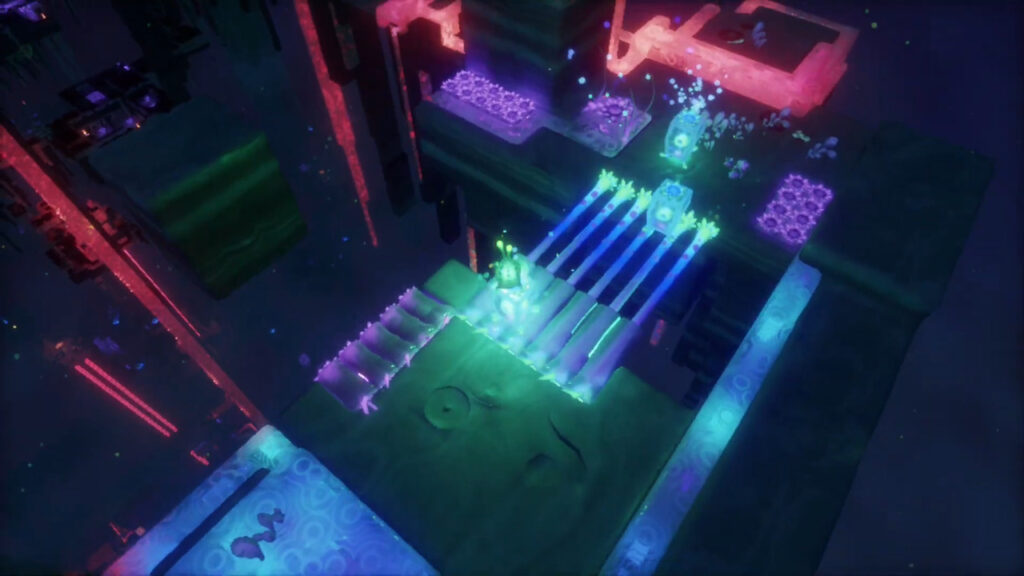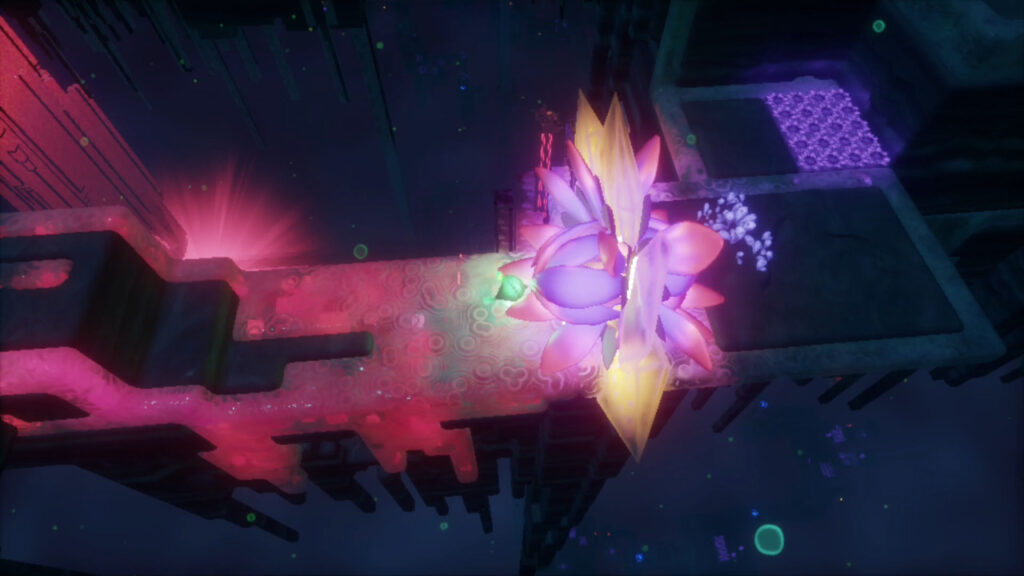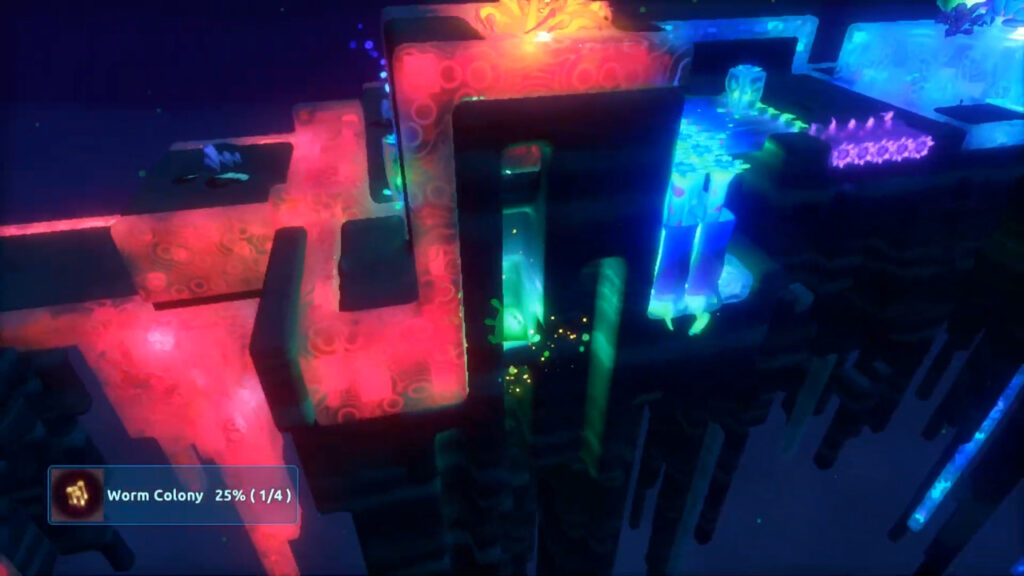
Developer: Luminawesome Games
Publisher: Wired Productions
Platform: Switch, PC, PS4, PS5, Xbox One, Xbox Series X|S
Tested on: Switch
Lumote: The Mastermote Chronicles – Review
It has been over a year since Lumote: The Mastermote Chronicles was initially announced to be headed to PS4, and the wait is finally over, as the game has arrived not just on PS4, but on a plethora of other consoles as well. Luminawesome Games’ underwater puzzle platformer about a -frankly adorable- squishy sea creature certainly looks visually appealing but does it have what it takes to cement its place in your collection? Read on to find out!
Story
When a game uses the word ‘chronicles’ in its title, you’d expect there to be some kind of story, but unfortunately, this isn’t the case here. The game throws you straight into the deep, with no introduction or explanation whatsoever. The irony here is that there actually is a backstory to Lumote, and that the game even has an official story trailer, narrated by someone that does a surprisingly good imitation of David Attenborough. It’s a bit baffling to see how much effort was put into the trailer only for this story to be absent from the game, and an Attenborough-like narration throughout the game, similar to what we saw in AWAY: The Survival Series would’ve added a lot to the overall presentation of it.
Graphics
The screenshots don’t really do Lumote justice, as this is a game that relies on small and subtle effects to really bring things to life. Lumote takes place entirely underwater and the light you see comes from bioluminescence, so the movement of the water and the otherworldly glow of the environments are constantly moving ever so slightly. The result is a fantastic looking game, especially in motion, though we did find that it was a little taxing on the Switch, with occasional stuttering and frame drops. Towards the end of the game, we also felt like there could have been more visual variety here as things were really starting to look and feel identical. A very simple way to break this up would’ve been to switch the colors up between each of the six towers that the game is set in, instead of simply relying on the same red vs. blue color scheme throughout.
Sound
We already mentioned the absence of a narrator in the Story section of the review, and apart from the noises made by Lumote itself, there is no real voice acting present. Other creatures do make sounds, but unlike Lumote, they sound more animalistic and less like a person doing a voice. The sound effects are decent enough, but the saving grace of Lumote’s soundscape is the lovely OST. The haunting, echoing tunes fit the game’s underwater setting perfectly, adding an air of mystery to an environment that already feels alien from a visual perspective.
Gameplay
3D puzzle platformers are a dime a dozen nowadays, so developers have to put in some effort if they want their game to stand out. Lumote certainly delivers here, with simple but elegant mechanics and great level designs, which sees the titular character descend into the depths of the ocean in order to become the Mastermote. In order to do so, the player must navigate through the various levels that make up this undersea world and turn the bioluminescent pathways from red to blue. This is easier said than done of course, as there wouldn’t be much of a game otherwise, and so, you’ll need to put on your thinking cap if you’re going to make it all the way to the bottom of the ocean. The pacing of the game is a thing of beauty: by getting the introduction of the mechanics out of the way early on, Lumote is able to ramp up the difficulty by the time you enter the second tower, and this is when Lumote definitely becomes challenging. Through clever combinations of its various mechanics, Lumote is able to craft puzzles that make players rethink how to approach this world.
Things start out easy enough, as Lumote’s first tower serves more as a tutorial, letting players familiarise themselves with the control scheme and how Lumote itself is able to interact with the world and its inhabitants. The game comprises 50 levels, spread out over 6 towers, and you’ll need to free other Motes along the way. You are able to control these other Motes at certain points in the game -which is something you need to do to clear their respective levels- but they aren’t the only creatures you interact with. Whether it’s jellyfish, anemones, or more exotic critters, each of the various life forms you encounter has a purpose, from forming a new platform for Lumote to jump onto, to serving as an organic battery of sorts. If this sounds overwhelming and like a lot to take in, don’t worry: Lumote introduces all of its mechanics early on, and it’s easy enough to get acquainted with them by simply playing the game.
The accessibility of a control scheme is often something that can make or break a platformer, and Lumote excels here as well, not in the least thanks to the camera controls. A poorly implemented camera can really affect the enjoyment of a game like this, as we recently saw with Arise: A Simple Story‘s fixed camera perspective, so we were happy to see just how smooth the camera moves here. It’s an essential feature as well: not only does rotating the camera around the screen allow you to discover specific secrets, but it also allows you to clear specific jumps with ease that are seemingly impossible from the wrong viewing angle.
Admittedly, the gameplay isn’t without its flaws: there were a few instances where we died not to a fault of our own but because of what seemed to be poorly implemented hitboxes. One particularly egregious example was when we were guiding a jellyfish towards a specific part of the level. The jellyfish floated upwards and hit a moving platform, prompting a restart of the level. When you die, you’ll respawn at the start of the level, and any puzzle progress will be reset. While we’re fine with this if dying was a fault of our own, it did get a little frustrating when an unfair death happened, especially if we had already made a lot of progress moving platforms to desired locations and guiding creatures around. Likewise, the way creatures respond to being guided around can be a bit hit or miss, with them sometimes moving in the opposite direction of where you need them.
Despite its relatively short length, Lumote feels like a complete package, from a gameplay perspective at least. The game takes roughly six hours to complete, although if you’re a completionist, you’ll probably be spending more time with Lumote, as the game has a slew of optional hidden artifacts to collect, as well as a built-in photo mode for budding undersea photographers. We also recommend not rushing through Lumote, as things can start to feel repetitive after a while, not in the least due to the aforementioned lack of visual variety when it comes to the game’s environments. Breaking our gameplay up over short sessions, however, kept things fresh, and motivated us to keep coming back and to see the end of the game.
Conclusion
While Lumote plays things a bit too safe to really stand out among the sea of 3D puzzle platformers, it’s still a decent little game. The absence of a story, some flaws with creature mechanics, and the repetitive nature of the environments are definitely things that Luminawesome Games could have improved upon, but somehow, the game kept drawing us in. The easy-to-learn gameplay, combined with excellent puzzle mechanics made for a game that was challenging and fun. We wouldn’t go as far as to say that Lumote is a must-have title, but it’s certainly worth looking into if you’re looking to dip your toes into a new puzzle platformer.
Lumote: The Mastermote Chronicles - Review,









No Comments